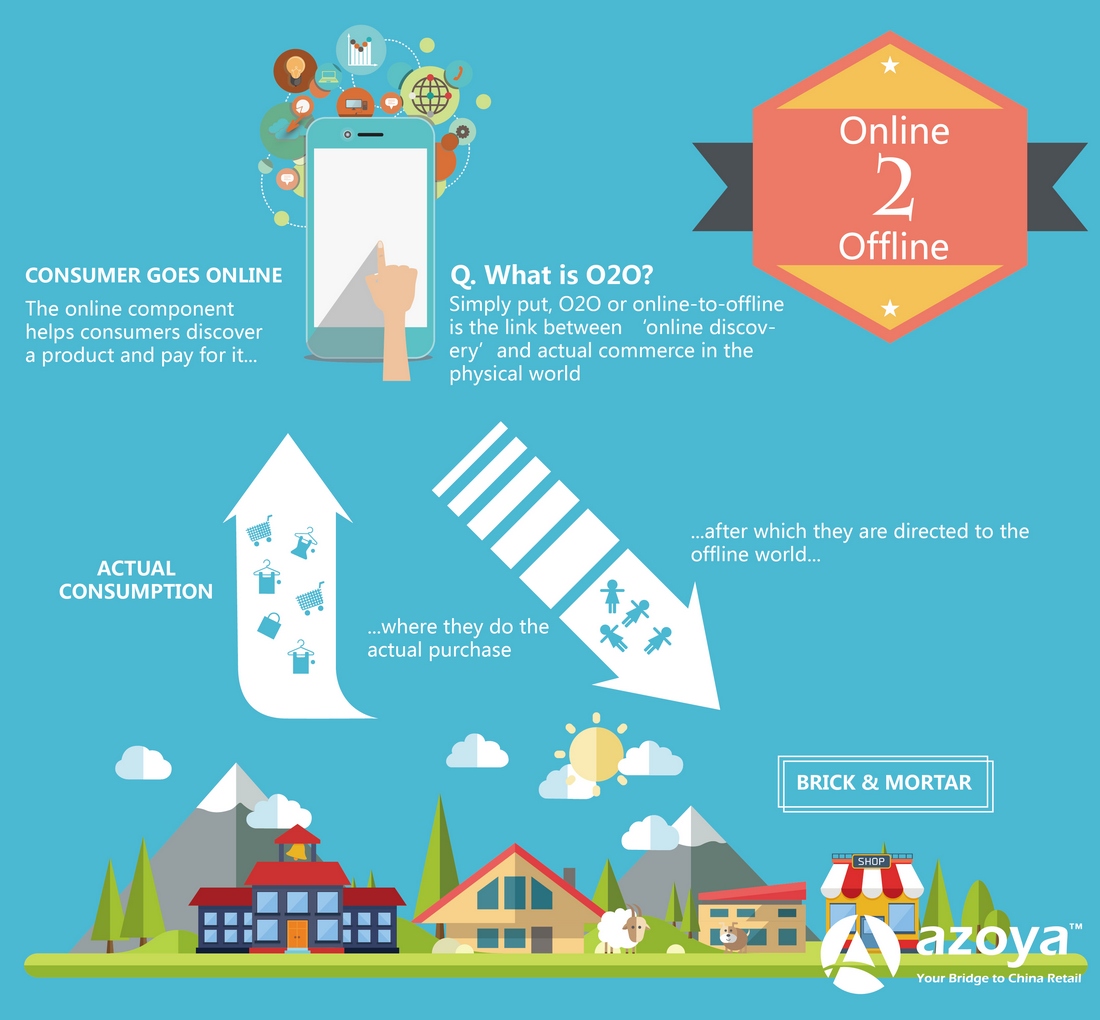Chinese O2O: From Domestic To Cross-Border
In China, O2O (Online to Offline) has been a hot consumer internet trend recently. Azoya innovatively expands this model to cross-border shopping.
by Azoya

In China, O2O (Online to Offline) has been a hot consumer internet trend recently. By definition, it is an e-commerce model that combines offline business opportunities with the Internet. O2O e-commerce platforms attract customers online, but the real consumption of services is experienced by the customers offline.

The term O2O was first coined by Alex Rampell, CEO and founder of Trialpay, in a 2010 TechCrunch article. He wrote: “ The key to O2O is that it finds consumers online and brings them into real-world stores. It is a combination of payment model and foot traffic generator for merchants (as well as a “discovery” mechanism for consumers) that creates offline purchases.”
Globally, O2O has bred businesses like Groupon, OpenTable and Uber. While, in China, O2O is not just an innovative business model, it’s a new norm in the Internet economy. Nearly all Internet giants are investing heavily in O2O business, offering a profusion of services to customers. There’re several indicators that heralding the rise of O2O concept in China.
Chinese people are becoming more connected. The number of mobile users keeps rising in China. According to MIIT, the number of Chinese mobile users reached 1.29 billion in March 2015, with the 4G users accounting for 162 million. The wide access to the internet has granted a technical ground for O2O offerings.
Chinese Internet companies are employing increasingly sophisticated and mature IT technologies.Taking the QR for example, it’s embedded in WeChat, the country’s biggest messaging app. An old stat, from October 2013, counted more than 113 million scans in one month. According to Visualead, an Israeli startup providing custom QR codes, China is 2 years beyond the rest of the world for the application of QR, which is usually shunned by the Western early adopters.
The way Chinese customers obtain information has been revolutionized. A growing number of smartphone users now searching for information on their phone before purchasing. As customers weave in and out different digital channels to do their research, they are exposed to various marketing touchpoints. Merchants can tap into this behavior pattern by targeting accurately at customers’ exact needs.
Customer behavior has changed. Chinese consumers are now more discerning and highly connected, and they increasingly seek “shopping convenience” where they can shop anytime, anywhere and in any way, via a variety of channels. They also expect multiple methods of payment and various pickup and return options. There is growing demand for an integrated shopping experience across multiple channels.
As more Chinese customers become increasingly experienced in the Internet economy like O2O, it’s time to expand this business model to a new area – cross-border outbound shopping. Since more and more Chinese tourists go abroad and purchase tons of products from overseas, there arises great opportunity to capitalize this trend.
Azoya rolls out the innovative solution called cross-border O2O. It’s similar to what’s called Omni-Channel retail in the west, which access customers in various virtual and physical channels. Here’s the scenario that Cross-border O2O applies for:
A Chinese customer goes into an overseas physical store, he knows little about the products and the store, but luckily he finds the familiar QR with Chinese sign telling him to scan. After he scan the QR, information about the products and the merchants pops out on his phone. He then completes the transaction on his phone, and the products will be shipped to his Chinese home shortly after he cones home. What’s even more wonderful is that the shopping journey doesn’t stop there. After the customer comes home, he can continue shopping from the same store on his phone and share his shopping experience on social media.
This ingenious solution helps set up an Omni-Channel retail for overseas brick-and-mortars. Under this solution, overseas merchants can attract more Chinese customers to their physical store and retain those who might have never returned.
FULLY MANAGED CROSS-BORDER E-COMMMERCE SOLUTIONS
| China E-commerce Cloud Services | International Brand Agency | Cross-border O2O |
9 SERVICE BUILDING BLOCKS
| Elastic Cloud | E-com Platform Setup | Marketing |
| Managed Operations | China Payment | International Logistics |
| Customer Service | Value-added Services | Omni-Channel Kits |